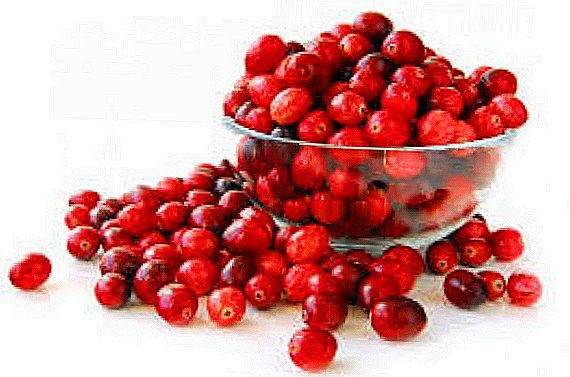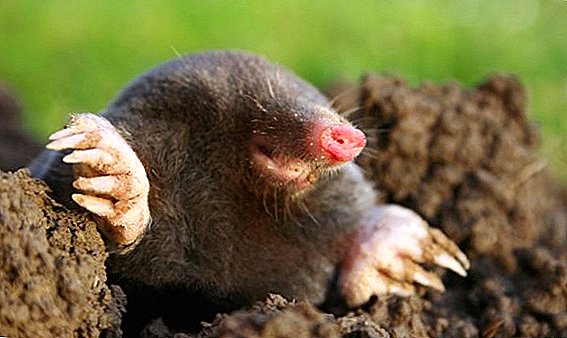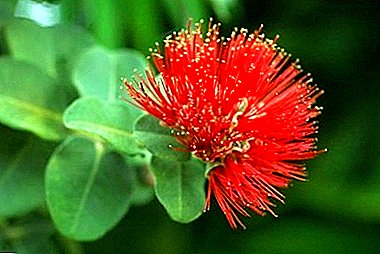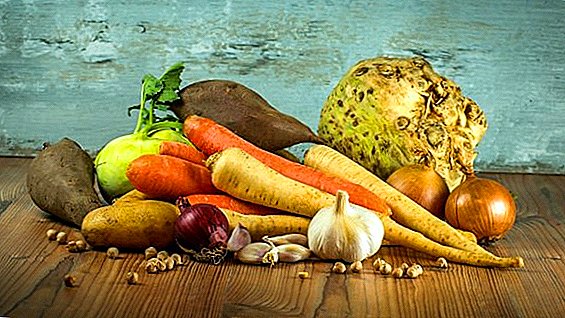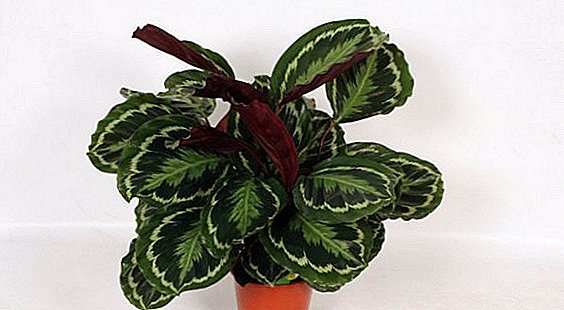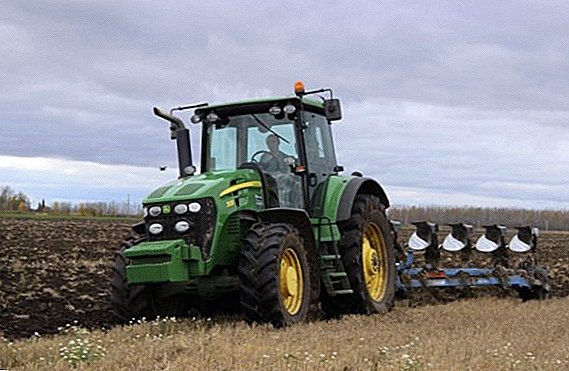 To destroy the weed shoots, to improve the structure of the soil, to plow organic and mineral fertilizers into it, you can use the common method of autumn field work - autumn plowing.
To destroy the weed shoots, to improve the structure of the soil, to plow organic and mineral fertilizers into it, you can use the common method of autumn field work - autumn plowing.
This method can significantly improve the yield of grain crops and minimize the complex of necessary spring field work.
Why plowing is called autumn
This type of processing (plowing, digging) is carried out in the summer-autumn time, preparing the ground for spring planting. Winter plowing got its name due to the fact that it is carried out until late autumn, when the earth is already beginning to chill under the influence of low temperatures.
Important! Winter processing is used only for sowing spring crops, not winter crops.
What task does it perform
This complex of agrotechnical measures performs a number of important tasks:
- contributes to the destruction of weeds, diseases and pests;
- prevents the development of water and wind erosion;
- serves to embed fertilizer in the ground;
- creates conditions for lowering salt horizons;
- contributes to the accumulation and preservation of moisture and nutrients in the earth;
- creates conditions for the development of beneficial microbiological activity;
- improves the structure of the soil, giving the treated layer a finely lumpy condition;
- closes up the residual residues.
Learn what plowing is necessary for and how to plow the soil with a walk-behind tractor.

Where does this method apply?
The effectiveness of this method explains its significant distribution. Winter plowing is used very widely as one of the main methods of cultivating land in agriculture.
Did you know? The first plows appeared in the III millennium BC. For a long time, they were entirely made of wood, until in ancient Rome they invented a plow with wheels and metal ploughshare.Do not use this method only in certain regions:
- in places with a harsh climate and little precipitation (the temperature in winter falls below -40 ° C);
- on heavy sandy soils in highly humid areas.

We recommend to find out what cultivation and harrowing of the soil is for and how to properly cultivate the land.
When do you use this method?
- Winter plowing is used in arid areas to accumulate moisture in the soil.
- In sufficiently wetted areas, treatment under a plowing has the opposite effect - it normalizes the amount of moisture and improves the nutrient and air regime of the soil.
- This method of treatment is effective in case of severe contamination of fields and a high degree of spread of diseases and pests of agricultural crops.
- Winter plowing is used when there is a need to reduce the tension of spring field work, to provide high-quality pre-sowing treatment and organize the sowing of crops in the best agronomic terms.
Important! The frequency of autumn plowing depends on the condition of the soil and on the precursor culture. On podzolic, soddy and loamy soils, this is done annually. Sandy, chestnut soils and chernozems require autumn plowing every three years.

Familiarize yourself with soil types and ways to maintain their fertility.
Plowing field treatment methods
In addition to plowing per se, other methods are used to prepare the land for sowing.
The main methods of soil change
- Crumble - clumps of soil crumble.
- Soil wrapping - the upper and lower layers are swapped in places, along the way, the remnants of the harvest and fertilizer are buried in the ground.
- Loosening - the number of pores increases, the air permeability of the soil increases, the coarse crust on the soil surface and the root system of weeds are destroyed.
- Compaction - soil particles are compressed, thereby reducing lumps.
- Stirring - the arable layer throughout the depth becomes the same.
- Cultivation - is grinding the soil and the destruction of weeds.
- Disking - the soil crumbles and loosens, partially turns around and mixes.
- Harrowing - the harrow crushes crushed soil layers and levels their upper part.
- Rolling - the rollers roll the top layer of soil, make it smoother, crushing cracked clumps.
Did you know? For the appearance of one centimeter of fertile soil it takes about 1000 years.

What methods are used
The following methods are used for the treatment of zyabi:
- Chisel processing - this method involves the loosening of the earth without turning it over to form ducts for water in it.
- Shackless way - remains of crops remain on the surface; soil layers are loosened, but remain in place.
- Dumping way - there is a simultaneous mixing, loosening and turning the black soil vertically.
- Plowing - the remains of plants are buried in the ground, the layers of which are crushed. At the same time fertilizers are applied.
- Main processing - significantly affects the soil structure: improves water and air exchange, helps prevent soil erosion. The main processing can be carried out not only in the autumn, but also in the spring, before sowing.
Learn how to dig the ground in the garden.
This complex of agrotechnical measures was predominant in the agriculture of the Soviet Union. Today, processing under plowing has also not lost its relevance and is widely used along with more modern methods of improving indicators of soil quality and increasing crop yields.


